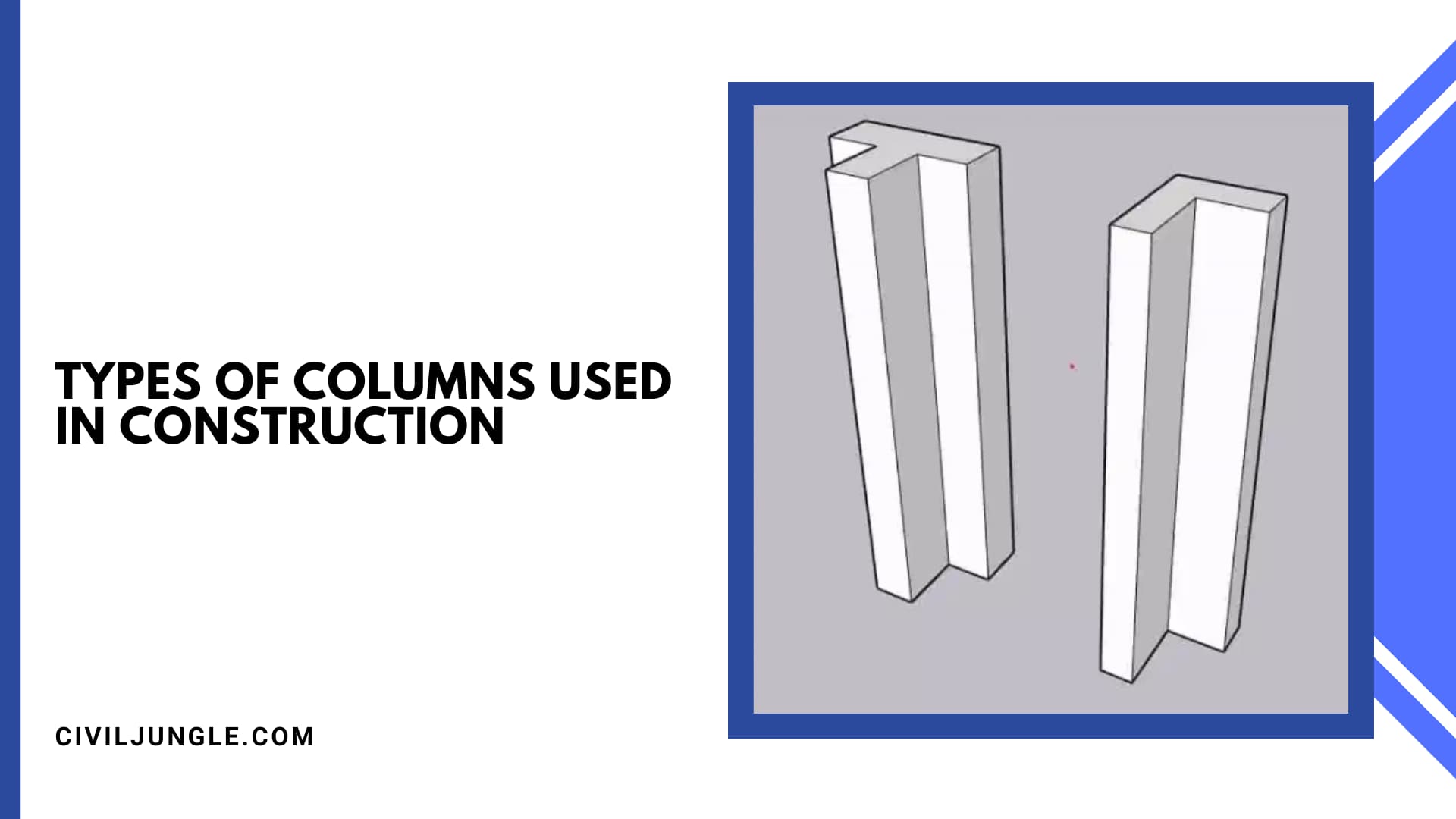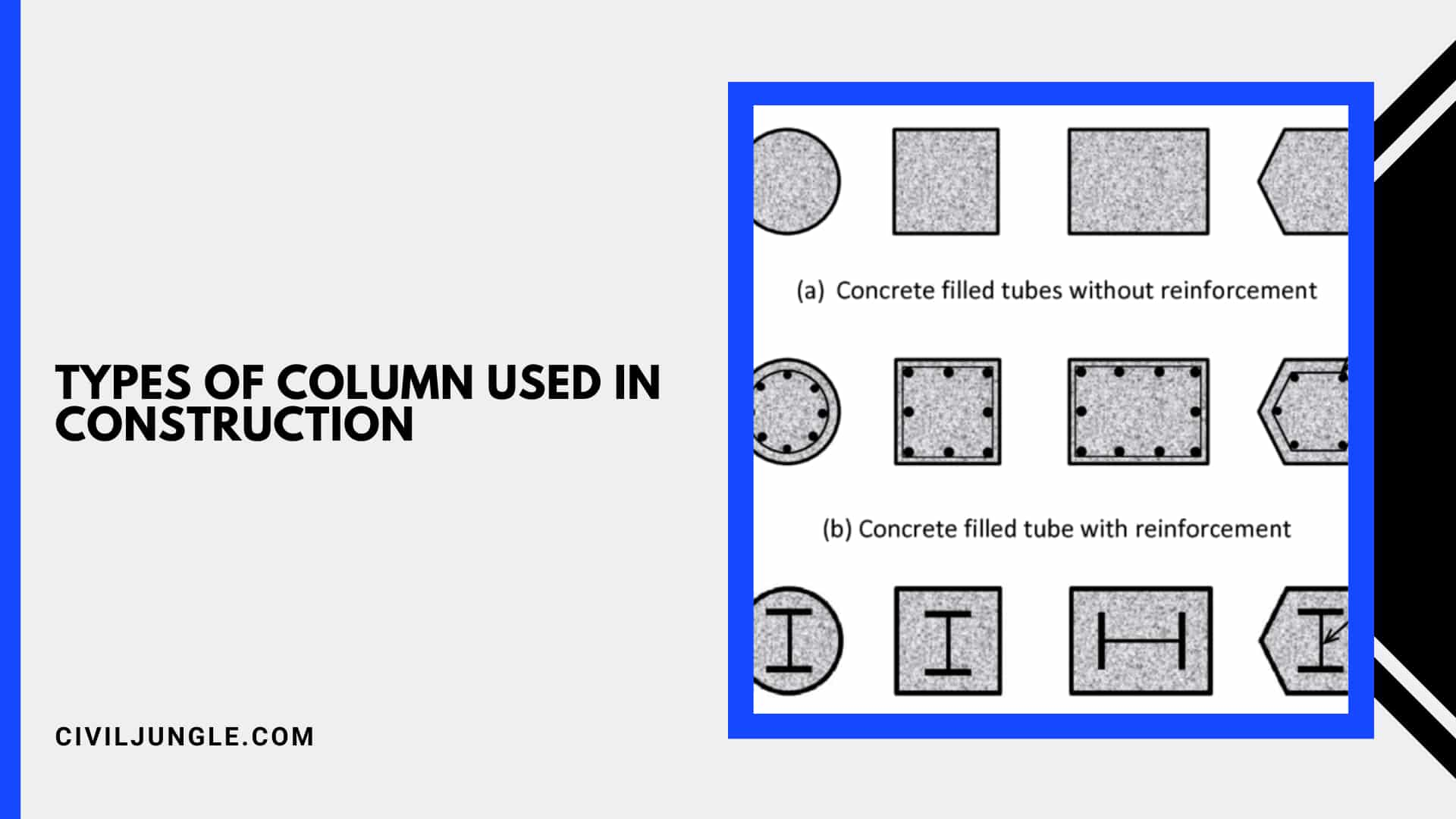What Is Column?
Important Point
Different types of columns are used as required in building construction. The effective depth of a building column is at least 3 times its side dimension.
The structural column is the vertical member of the structure in building construction. Through this, the dead load and live load of the structure are transferred from the beam and slab to the base.
Columns act as compression members to transfer axial loads. The column can be identified as an essential element of the constitution. Sometimes the failure of the support column results in a failure of the structure.
What Is the Importance of Column Construction in Building Structures?
In the structure of a building, the column carries an axial load as a compression member.
Other external forces, such as snow load, can cause the bending of the structure of the building by wind load. Columns are used in the frame structure of a building to prevent structural failure.
Small size structures can be made with brick masonry for the height of the residential buildings. But in a multi-story building.
The structure cannot be made by brickwork construction. This is because, in a high-rise building, a heavy load needs to be transferred to the base of the structure.
Different types of columns are commonly used in building construction to transfer axial loads and additional forces to the ground safely.
The frame structure made up of columns increases its resistance to earthquakes or any other external factors.
Also, Read: Types of Beams in Constructions
Types of Column Used in Construction
Different types of columns are used in construction,
A. Types of Column: Based on the Type of Loading
1. Axially Loaded Column
If the axial loads on the column are transferred to the base by the center of gravity of the cross-section of the column. This type of column is defined as an axially loaded column.
This type of column is rare in construction. Consolidating the vertical load of a building on the center of gravity of the column section is not practical.
In a high-rise building, the interior column in the structure transfers a symmetrical load from the floor slab. An internal column used in high-rise buildings is an example of this type of column.
2. Column with Biaxial Eccentric Loading
The axial load on the column does not coincide uniformly with the center of gravity of the cross-section. The column can then be defined as a biaxially eccentric loaded column.
Columns with biaxial loading are usually the corner columns of a building structure. This type of column is firmly connected to the beam at the top corner.
3. Uniaxial Eccentrically Loaded Column
In a column, the axial load does not coincide with the center of gravity of the column cross-section but transfers the eccentric load to the X or Y axis of the cross-section of the column. Then that column is called the uniaxially eccentric loading column.
This type of column is used for the loading system in the case of beams rigidly attached to one side of the column on edge.
B. Types of Columns: Based on the Shape
4. Square or Rectangular Column
The most common type of square or rectangular column plays an important role in the construction of buildings and heavy structures.
It is much easier to construct a rectangular or square column than a circular column. This type of column has good resistance to pressure during concrete due to its ease of fixing and shuttering support. More effective and cheaper in the construction of square or rectangular columns.
5. L and T Shaped Column
In the structure of a building, an L-shaped column is usually used as a corner element of the boundary wall. In addition, it performs functions similar to rectangular or square columns.
T-shaped columns are used to design the structure based on the requirements of high-rise buildings. This type of column is used in the construction of bridges.
6. Circular Column
Circular columns are used in building construction mostly for aesthetic purposes in the elevation of buildings.
In the circular column, more than 4 reinforcement bars are used. This type of column can have higher bending resistance than a square or rectangular column. Circular columns are used in buildings and mostly as bridge columns.
C. Types of Column: Based on the Type of Reinforcement
7. Tied Column
This type of column is made of reinforced concrete. Strength is provided by placing stirrups at close distances in longitudinal reinforcements.
If the stirrup is removed in the longitudinal bar, there is a possibility of severe failure of the column. Typically this type of column is 95% of columns in the construction of buildings all over the world.
8. Composite Column
In this type of column, the closed structural steel or cast iron column is reinforced in concrete with longitudinal reinforcement and spiral reinforcement.
Composite columns are used in truss structures to prevent the corrosion of steel columns. This type of column gives more strength with a fairly small cross-section with good fire performance.
9. Spiral Column
When a column with spiral reinforcement at equal distances above the longitudinal bar forms a column, it is called a spiral column.
The spiral column should usually use a minimum of 6 nos longitudinal bars. The diameter of reinforcement should not be less than 12 mm. In addition, the spacing between the longitudinal bars should not exceed 300 mm.
D. Types of Column: Based on Construction Materials
10. Brick Column
Brick Masonry-type Columns Are Used in Load-Bearing Structures. It Plays an Important Role in Stabilizing the Structure of the Building.
Sometimes, brick masonry columns are constructed by the architect on the concrete column to give an aesthetic look. The brick masonry column can be shaped into various round, rectangular, square, or elliptical shapes.
11. Timber Column
The timber used as column material is known as timber column. Wooden columns were widely used in ancient times.
Timber columns can be used in the structure of the building as a strong and durable building material. If the timber column is properly maintained and seasoned with wood from time to time, it gives strength to the structure and reduces weight.
12. Block Column
The column is constructed from AAC block or cement concrete block. This column is called the block column. The weight of a block column is less than that of a concrete column.
13. Stone Column
A column made using stones is known as a stone column. Commonly used to give the home an aesthetic look. Especially stone columns are used in the structure of temples.
14. Reinforced Concrete Column
This type of column is formed with longitudinal reinforcement and tie reinforcement. This type of column is mainly used for the structure of high-rise buildings. This type of column can be designed as a compression load.
15. Steel Column
Columns made of strong materials like steel are known as steel columns. Steel column is part of the steel structure in the industry.
Which provides ample space for the manufacturing unit. Steel columns are comparatively more flexible, strong, and durable than concrete columns.
Different-shaped columns are used in industrial manufacturers’ units. Sections like the T section and the I section.
The Square section, the rectangular section, the Circular section, etc., are used as columns in the steel structure.
E. Types of Column: Based on Slenderness Ratio
16. Short Column
According to the slender ratio to the short column, the ratio of the effective length of the column to the minimum dimension next to it is less than 12. The crushing of concrete causes small column failure.
17. Long Column
According to the slender ratio to the short column, the ratio of the effective length of the column to the minimum dimension next to it is bigger than 12. The long column fails by bending or buckling.
F. Types of Column: Other Type of Columns
18. Greek Column or Greek Pillars
The Greek column was built in the style of architecture by the ancient Greeks. The Greek column consists of columns of the Doric, Ionic, and Corinthian types.
These three types of columns were an important part of the compositions in ancient Greek culture in Greece. Greek column style is especially found in the structure of Greek temples.
19. Roman Column or Roman Pillars
Roman columns have almost the same structure as the Greek column but are more elaborate. The Romans made a name for themselves in the architectural world with their innovative use of arches and vault ceilings.
Like this post? Share it with your friends!
Suggested Read –
- Steps to Building a House
- What Is a Skeleton Frame And Their Uses
- Difference Between One Way Slab and Two Way Slab
- What Is the Strongest Foundation for a House And Their Types
- What Does Hail Damage Look Like on a Roof? (Complete Guide)
What Is a Column in Building Construction?
A column is a vertical structural member in building construction that transfers axial loads, including dead loads and live loads, from beams and slabs to the foundation. It acts as a compression member to support the structure.
What Is the Importance of Column Construction in Building Structures?
Columns play a crucial role in preventing structural failure by carrying axial loads and additional forces such as wind and snow loads. They provide stability and support to the building structure, especially in multi-story and high-rise constructions.
What Are the Different Types of Columns Used in Construction?
Columns are classified based on loading type, shape, reinforcement, construction materials, slenderness ratio, and historical styles. Common types include axially loaded columns, biaxially eccentric loaded columns, tied columns, composite columns, spiral columns, brick columns, steel columns, and Greek/Roman columns.



Leave a Reply